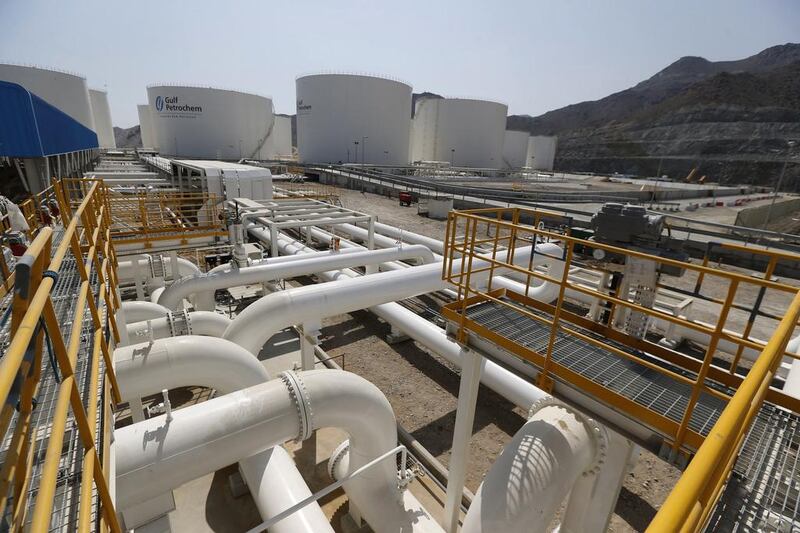Oil prices fell on Friday ahead of the end of the peak-demand winter season in the northern hemisphere, although ongoing supply cuts and the weakening dollar offered broad support to the market.
Brent crude futures were at US$70.22 per barrel at 0556 GMT, down 20 cents, or 0.3 per cent, from their last close. Brent the previous day marked its highest since December, 2014 at $71.28.
U.S. West Texas Intermediate (WTI) crude futures were at $65.38 a barrel, down 13 cents, or 0.2 per cent from their previous close. WTI also touched its highest since December, 2014 in the last session at $66.66.
Georgi Slavov, head of research at commodities brokerage Marex Spectron, said despite a generally healthy outlook for oil demand, there were short-term headwinds due to the upcoming end of the peak-demand period during the northern hemisphere winter season.
Many refiners shut down after winter for maintenance, resulting in lower orders for crude, their most important feedstock.
"Demand is starting to weaken as ... refining capacity was taken out of the market," Mr Slavov said.
U.S. bank Jefferies said "a fairly heavy maintenance season" was starting in the US, adding there was also upcoming "scheduled maintenance in the Middle East (including the 400,000 barrels per day Aramco Jubail refinery)."
This is reflecting in oil inventories.
"Global oil stocks built overall in the week ending January 19, as both crude and product stocks saw small builds," US bank Morgan Stanley said.
_______________
Read more:
Brent soars to $71 a barrel for the first time since 2014
Oil reaches highest price in four years
Davos 2018: Falih says exit from oil cuts to be gradual and smooth
_______________
On the supply side, US oil production is expected to hit 10 million bpd soon, after reaching 9.88 million bpd last week.
Output has grown by more than 17 per cent since mid-2016 and is now on par with top exporter Saudi Arabia's. Only Russia produces more, averaging 10.98 million bpd in 2017.
Rising US output threatens to undermine the supply restraint led by the Opec and Russia, aimed at propping up prices.
The cuts, coupled with demand growth, have contributed to a near 60 per cent rise in oil prices since mid-2017 as excess crude inventories have been drawn down.
Crude oil futures have also received support from a weakening dollar.
The US currency has lost almost 13 per cent in value against a basket of other leading currencies since the start of 2017.
As oil is traded in dollars, swings in the greenback can also impact oil demand as it affects the price of fuel purchases for countries using other currencies.
"The weakening of the US dollar against a basket of global currencies... has positioned 2018 to lead off with strong levels of oil demand," said BMI Research.






